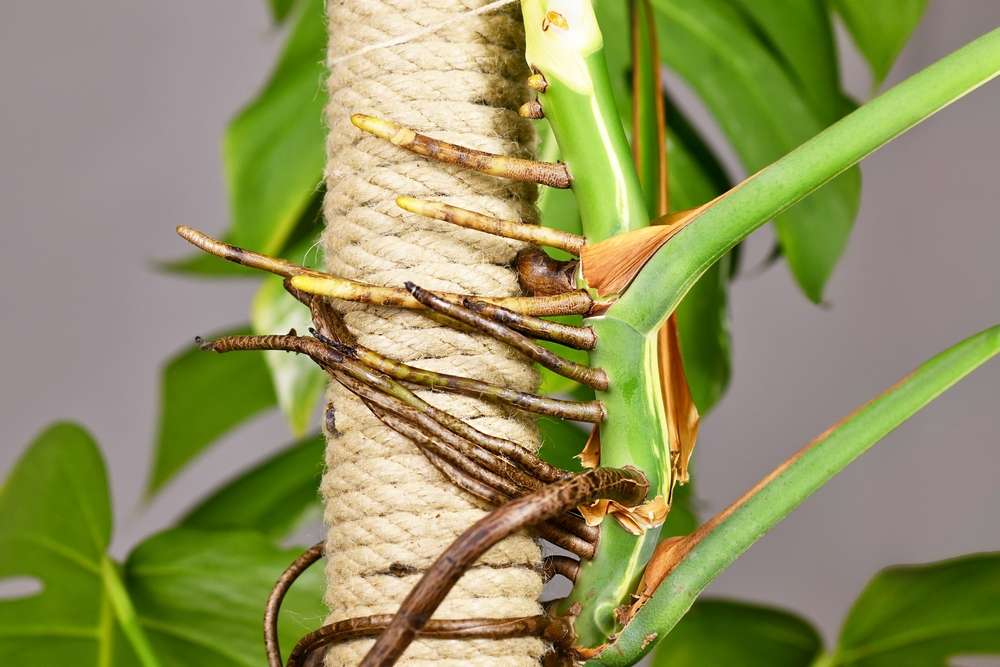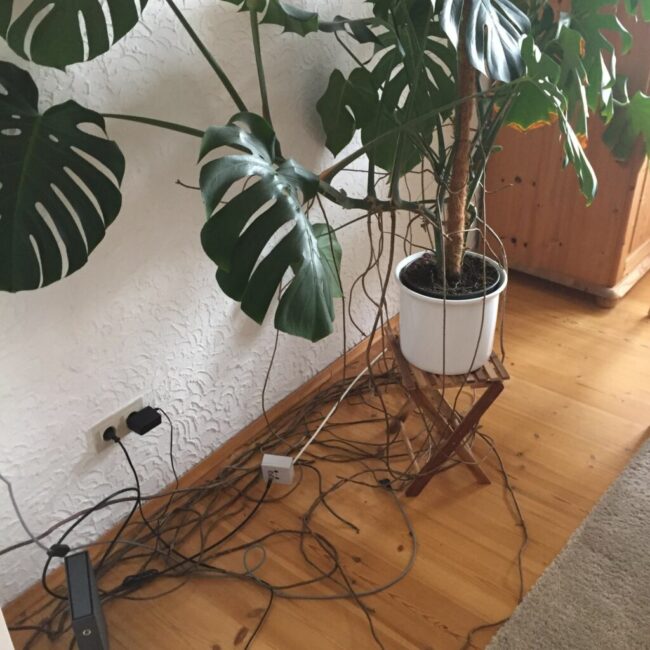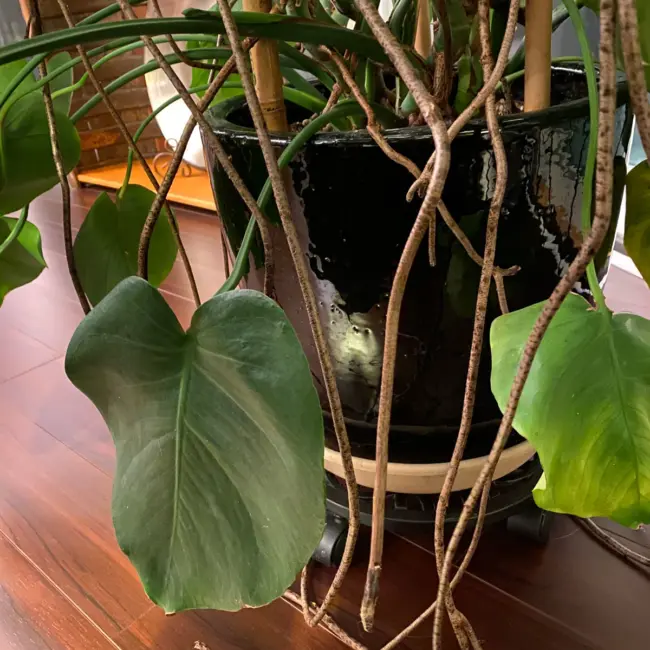


They hang from the pot, grow in all directions, and sometimes resemble tentacles: aerial roots. Especially on aroids like Monstera or on orchids, many people reach for the scissors—for aesthetic reasons. The reasoning: “It looks messy”—so off they go.
But be careful: This is actually one of the most common care mistakes with these plants. Aerial roots aren’t just visual noise—they’re an important part of the plant’s structure and serve more purposes than you might think.
Aerial roots are specialized structures that serve different functions depending on the plant:
Absorbing water and nutrients from the air (especially in orchids)
Anchoring and climbing support (e.g. Monstera, Philodendron)
Stabilizing in humid environments (e.g. tropical epiphytes)
Acting as a storage organ in fluctuating conditions
If you cut them off, you’re not just removing functionality—you’re also creating open wounds. These cuts can dry out, weaken the plant, and become entry points for pathogens.

If the aerial roots bother you visually or get in the way, there’s no need to cut them. Instead, you can gently redirect them—along a moss pole or trellis, for instance. This not only looks tidier but also helps stabilize the plant.
Alternatively, you can guide them into the pot. There, they can absorb water and nutrients and contribute to additional root formation. This improves overall stability and supports healthy growth.
Most importantly: Accept them for what they are—a visible sign of vitality and adaptability.
In most cases, a few aerial roots are a natural sign of a healthy plant. Especially with Monstera, Philodendron, or orchids, they’re part of the normal appearance. Thinking of them as “messy” misses the point—they’re a biological response to the environment and an expression of growth.
It’s a different story when your plant suddenly produces aerial roots en masse.
If every leaf node starts growing roots, if stems seem focused solely on aerial root production, or if the plant appears to be putting lots of energy into them, it could be a quiet cry for help. Plants often do this when they’re trying to secure more resources or stabilize themselves under stress.
Typical causes of excessive aerial root growth:
Too little light – the plant is searching for better conditions
Dry air – a response to low humidity
Pot too small or rootbound – no space left for new underground roots
Lack of support – long stems with no climbing structure
If you notice these signals, don’t panic—but do take a closer look. The FYTA Beam helps you assess your plant’s environment objectively and identify potential stress factors. That way, you’ll know whether your plant is simply thriving—or struggling with its surroundings.
👉 Want to dive deeper into the purpose of aerial roots and why they’re vital in nature? Check out this article!


Loving plants means letting them be a little wild. With FYTA, you gain a deeper understanding of your plant’s natural behavior—and learn when doing less is actually doing more.
